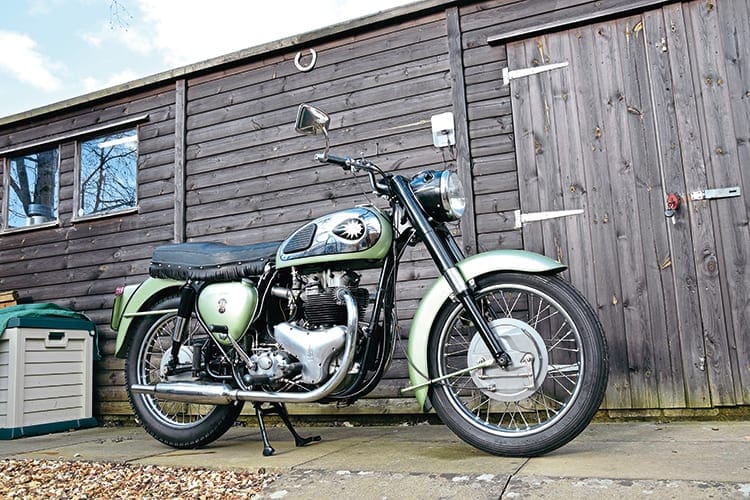
Words and pictures by Oliver Hulme
“A SPORTS MACHINE in the true tradition…the Star Twin has few equals as a machine for sustained high-speed road work”. So said The Motor Cycle in April 1952, reviewing the latest example of the BSA A7. It is fair to say that The Motor Cycle liked the A7, praising its: “zestful acceleration, excellent road holding, and the ability to devour the miles in unobtrusive fashion”.
That zestful acceleration was provided by a motorcycle with a 92mph top speed and a 16.8 second quarter mile. The glowing 1952 verdict was about the plunger model, a frame design soon destined for the annals of history. Within a few years BSA would drop their rigid and plunger models for a new swingarm equipped frame of a design that would endure for BSA until the end of the 1960s.
The original 495cc twin had an engine originally conceived before the Second World War to take on Triumph’s Speed Twin. This first A7 was a machine in which both Val Page and Edward Turner had some input, though Bert Hopwood was in overall charge of the project. At the end of the war Herbert Perkins and David Munro put the finishing touches to the twin and it was launched to an expectant public in 1946.
The vertical twin had a long-stroke iron head engine. It had a single camshaft at the rear of the block, unlike Triumph’s twin cam arrangement, with the pushrods running in a tunnel at the rear of the two cylinders.
A four-speed one-up three-down gearbox was bolted to the back of the crankcases in a semi-unit configuration and it used separate magneto and dynamo arrangements, the drives positioned under the upper twin lobes of the distinctive timing case. Pistons were 62x82mm, it had a 7:1 compression ratio and used a single carb, producing 26bhp. Vibration was said to be minimal, and the engine was designed to run on very low octane on pool petrol. This petrol, a mixture of all available fuels, was between 70-72 Octane and in May 1952 The Motor Cycle appealed for racers to be allowed unadulterated 75-80 octane fuel, as used in aircraft. By comparison modern unleaded is 95 octane.
Just two years later and in the middle of post war austerity, BSA launched a sports version of their 500 twin, dubbed the Star Twin. With pretty much everything from bread to nickel rationed the new A7 came as a surprise to many. This had two carbs and plunger suspension as standard.
Presented in sportier trim with a matt silver and chrome paint job, the Star Twin’s top speed was no better than the original A7, topping out at 84mph. The twin carbs were not a huge success, and without an air cleaner the petrol could catch fire if there was no gauze over the bellmouths. Twin carbs might have looked good, but even on the legendary Rocket Gold Star BSA only fitted one.
Read more in the March issue of CBG – on sale now!




